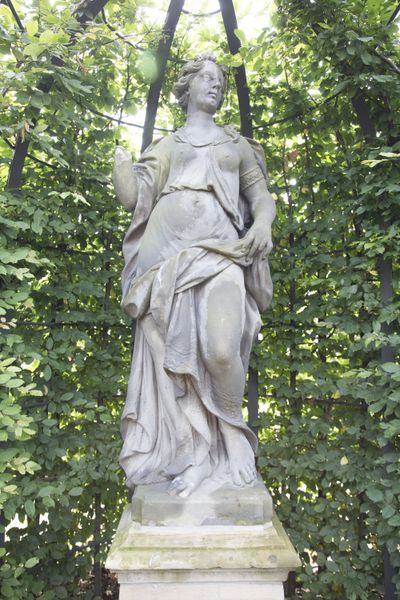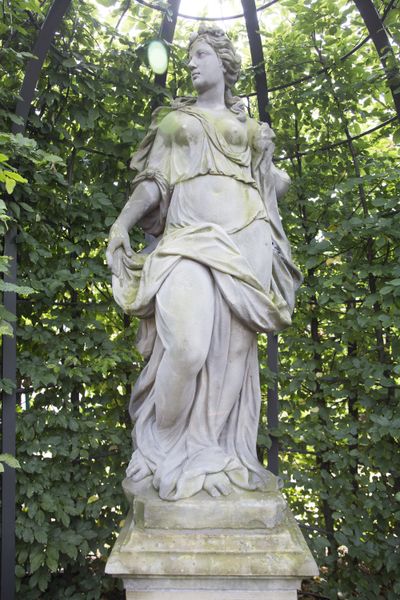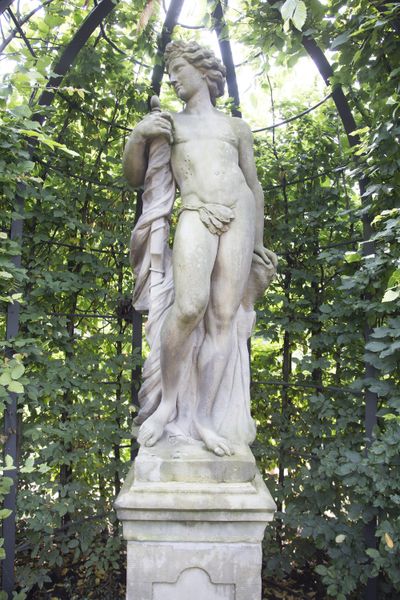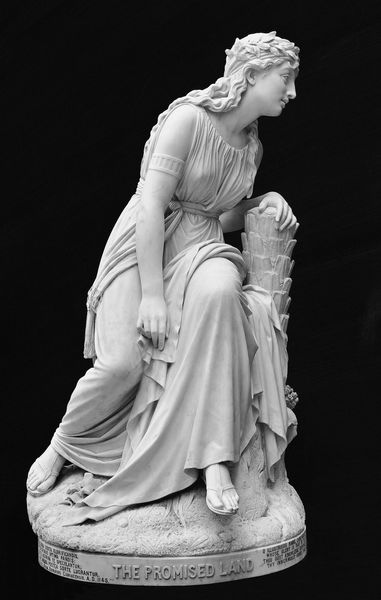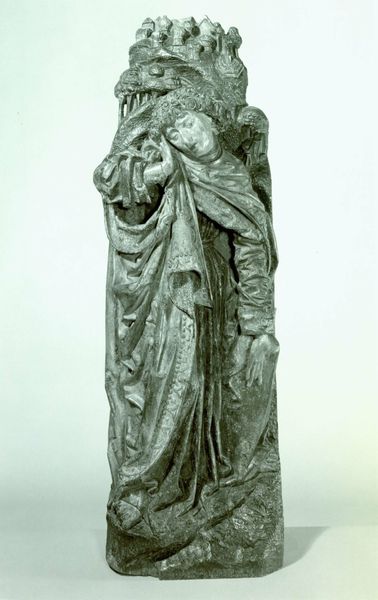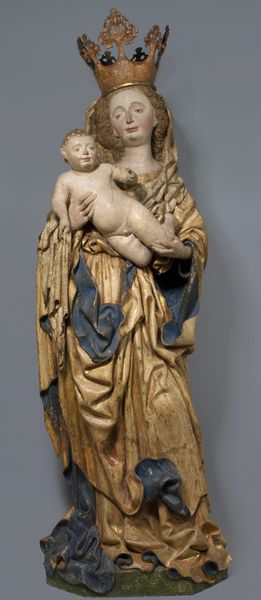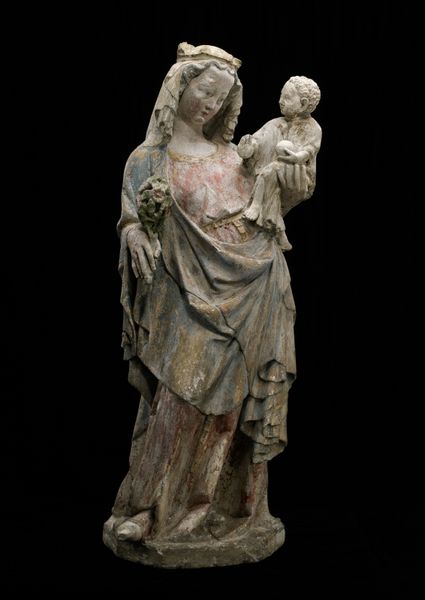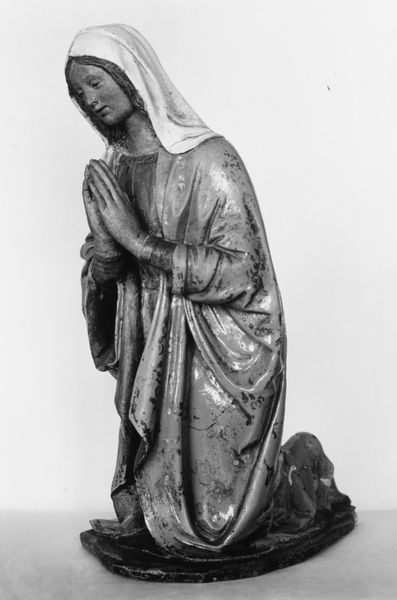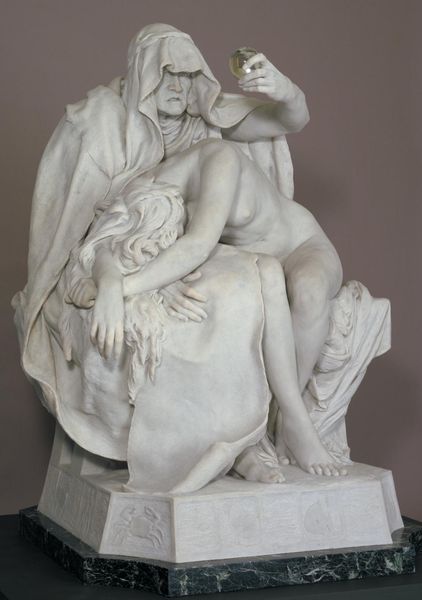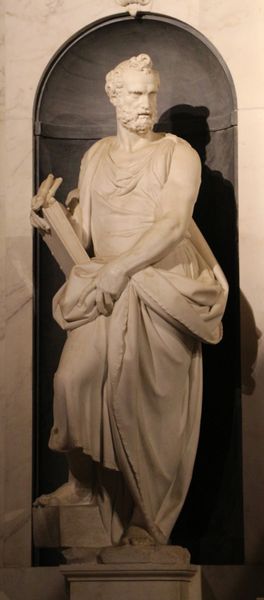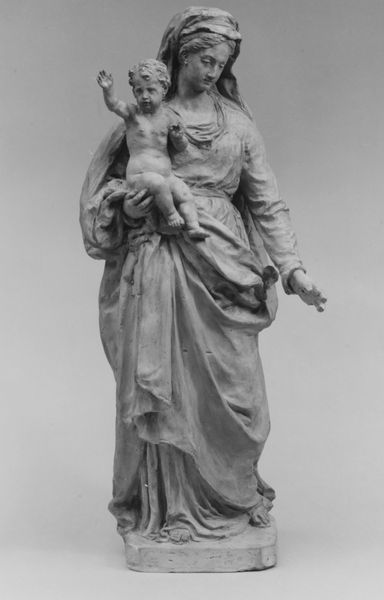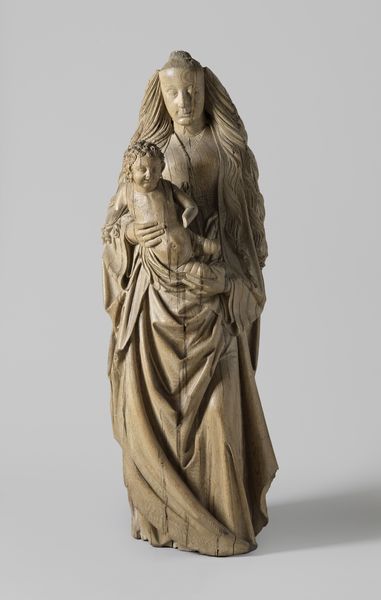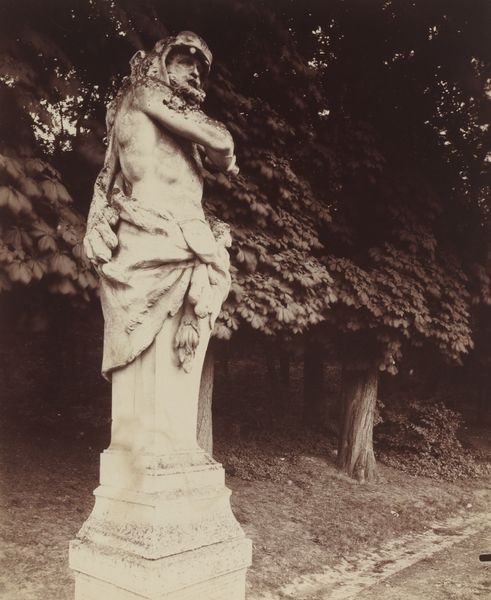
sculpture, marble
#
portrait
#
baroque
#
sculpture
#
landscape
#
fountain
#
figuration
#
sculpture
#
marble
Dimensions: 521 kg, height 174 cm, width 43 cm, depth 43 cm, height 104 cm, 207 kg
Copyright: Rijks Museum: Open Domain
Ignatius van Logteren created this marble sculpture, "Spring," in the Netherlands during the early 18th century. Van Logteren, a prominent sculptor in Amsterdam, was deeply involved in shaping the city's visual culture through his decorative work on public buildings and private residences. This sculpture evokes classical ideals of beauty and harmony through the allegorical figure of Spring. The sculpture, with its idealized form and flowing drapery, draws on the visual codes of ancient Greek and Roman art. During this period, the Dutch Republic experienced a time of economic prosperity and cultural exchange known as the Dutch Golden Age. This artistic classicism served to legitimize the power and status of the ruling elite. By studying period documents such as estate inventories, guild records, and architectural plans, we can better understand the complex interplay between artistic production, social structures, and cultural values.
Comments
rijksmuseum over 2 years ago
⋮
Ignatius van Logteren was a sculptor, stucco plasterer and architect in Amsterdam. In addition to facades and decorative programmes for grand houses, he also made garden statues. He portrayed spring as Flora, surrounded by flowers. Together with figures representing autumn and summer, she forms part of a group of originally four seasons. Winter has not survived.
Join the conversation
Join millions of artists and users on Artera today and experience the ultimate creative platform.
